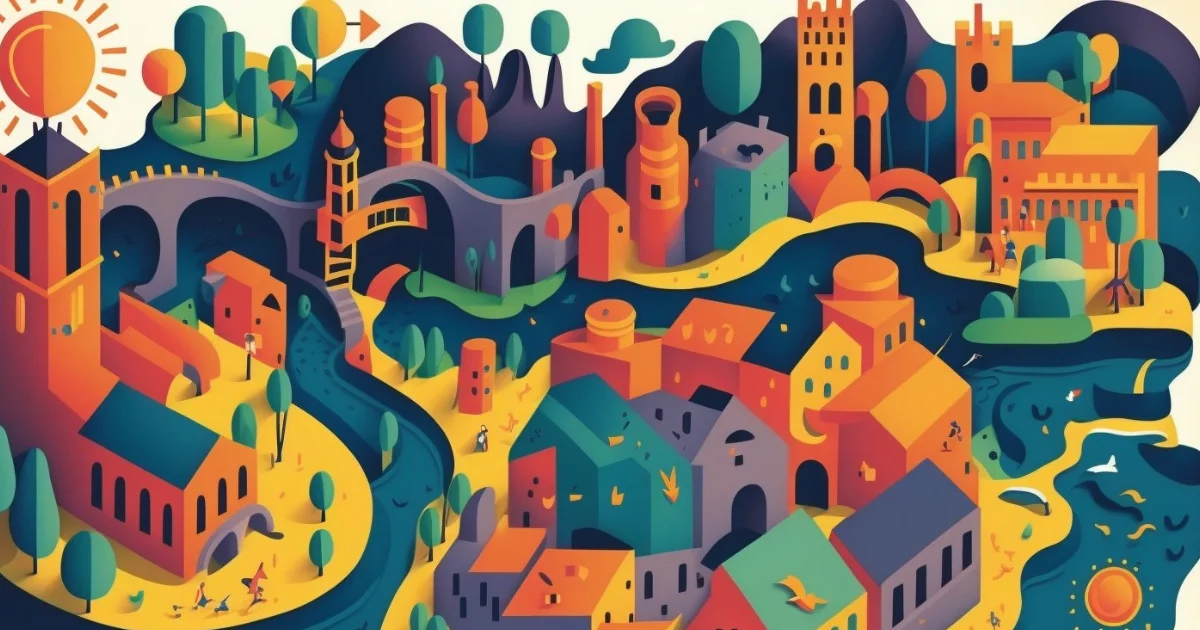This post may contain Amazon affiliate links which means, as an Amazon Associate, I may receive a small commission from purchases made through these links at no cost to you. I only recommend products I have personally used. To learn more, please see my privacy policy page.
A city is an urban area characterized by higher population density and vast human-made infrastructures in comparison to areas surrounding it. Its classification varies across countries but commonly considers factors like governance, population, and economic activity.
Key Words
- central business district (CBD)
- green spaces
- population density
- sustainability
- transportation networks
- urban planners
But the term ‘city’ carries layers of meaning, shaped by history, culture, and socio-economic factors. Dive deeper as we explore these dimensions, their transformations, and their significance in today’s globalized world. Read on…
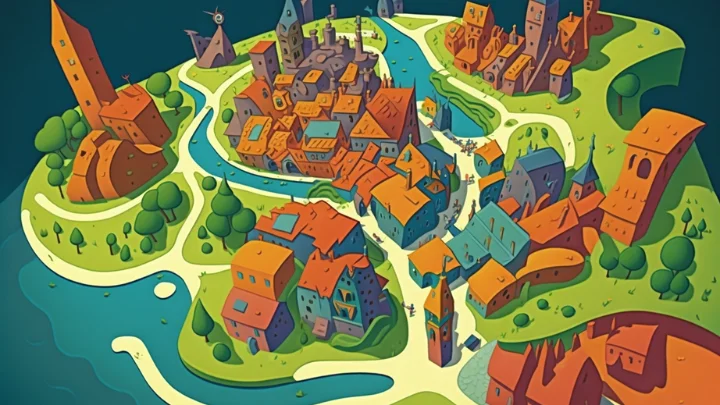
What is a City
Throughout human history, cities have stood as the pulsating hearts of civilization, driving progress and fostering innovation. Imagine the vast urban landscapes of ancient metropolises like Athens and Rome, where the population density was a testament to their grandeur. These cities were more than just large centers of habitation; they were hubs of culture, philosophy, and politics. Fast forward to the present, and we see modern cities, such as Dubai or Tokyo, redefine the urban landscape with their impressive architecture and city centers that never sleep.
From the business districts that form the core of economic activity to the intricacies of urban planning that ensure a sustainable future, cities encapsulate the essence of human ambition. Whether it’s the allure of life in major cities, the administrative significance of capital cities, or the unique character of regional cities, there’s an undeniable magnetism that cities possess. In today’s exploration, we journey through the interconnected grid of urban areas, rural communities on their outskirts, and the ever-evolving dynamics of migration and development. Let’s dive deep into understanding the essence of a city, its foundations, its growth, and the pivotal role it plays in many countries around the globe.
When we think of a city, images of towering skyscrapers, vast networks of streets, and a sea of people might come to mind. Yet, beneath these immediately recognizable features lie more characteristics that define urban areas.
Defining a City
Global definitions of a city vary. In many countries, the classification hinges not just on population size but also on non-agricultural economic activities. This means that a large town thriving on agriculture might not gain the “city” tag, whereas a smaller urban center with a bustling service sector might. The exact definition often rests with individual countries.
The development and planning of these urban hubs are overseen by urban planners, ensuring that growth is sustainable and meets the needs of its inhabitants. They play a pivotal role in shaping the city’s future, focusing on aspects from sustainable transportation to green spaces, ensuring the delicate balance between growth and sustainability is maintained.
In essence, cities are complex entities, formed by a myriad of factors. They stand as testaments to human achievement, ambition, and our innate desire to build communities.
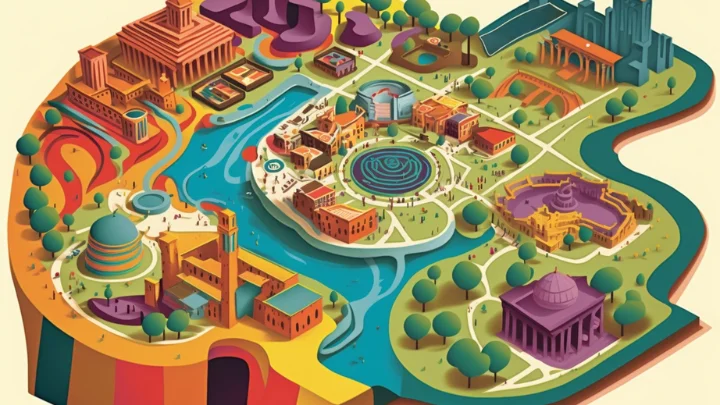
Anatomy of a City
Cities, with their urban landscapes, can be likened to living organisms, each part contributing to the larger whole. Understanding the anatomy of a city means exploring its foundational blocks, the elements that come together to form the urban experience.
At the city’s heart is its center, often referred to as the central business district. Here, economic activity thrives, and it’s not uncommon to find the headquarters of major corporations, bustling markets, and an array of entertainment and cultural venues. This epicenter of urban activity is surrounded by a contiguous grid of streets, or transportation networks, with each sector or zone having its own unique purpose.
Some cities include residential areas that flank the city center, providing homes for some of the city’s population. In larger cities and metropolises, these might be broken down into neighborhoods or districts, each carrying its distinct culture, heritage, and charm. The population density in these zones varies, with high-rise apartments dominating in some places, while others may showcase suburban homes with gardens.
Large cities also feature commercial zones. These zones might house shopping complexes, restaurants, and other businesses, forming a bridge between the hustle of the city center and the relative tranquility of residential zones.
Sports facilities, parks, and recreational areas offer residents spaces to unwind, exercise, and socialize. These green spaces are essential in breaking the monotony of the urban area, providing a breath of fresh air amidst the concrete jungle.
Another key component is the administrative region, where city halls and other governmental bodies operate. The decisions made here impact every corner of the city, from planning initiatives to public service programs.
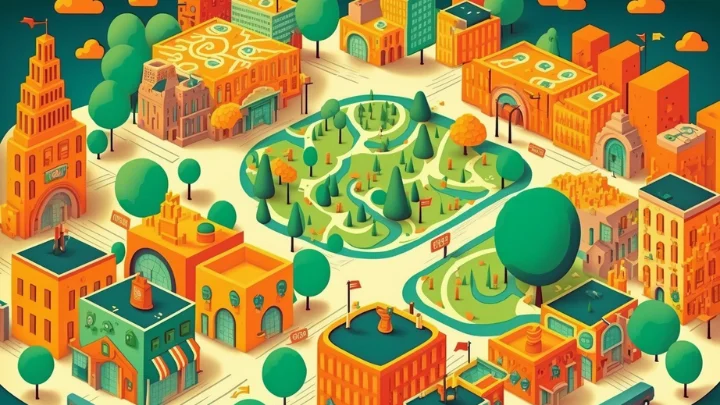
Beyond the Zones
But cities are more than just a collection of zones. Their essence lies in their interconnectedness. The urban development seen in modern cities is a testament to human ingenuity, where infrastructure is designed to support the city’s growth while ensuring sustainability. Sustainable cities focus on balancing growth with environmental considerations, a challenge that urban planners constantly grapple with.
In the vast urban landscape, it’s easy to overlook the rural areas that often border cities. These areas, with their contrasting lifestyles, often influence city dynamics, especially in terms of migration and resource distribution.
Lastly, the urban center and its surroundings are connected by a network of transportation systems. These include roads, subways, buses, and even bike lanes in sustainable cities. These transportation networks ensure that the city remains accessible and navigable for its inhabitants and visitors alike.
In essence, the anatomy of a city is a complex web of interconnected parts, each vital to its function, growth, and sustainability.
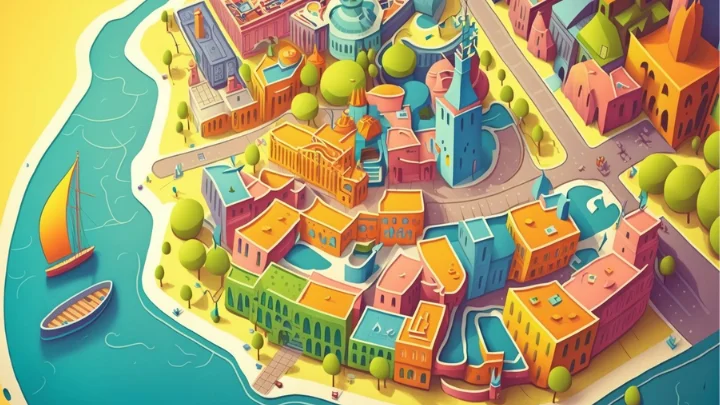
Why Cities Form and Grow
From the dawn of civilization to present day, the formation and growth of cities have been shaped by a variety of factors, both natural and man-made. Understanding these dynamics is essential to grasp the essence of urban geography.
Economic Activity: At the heart of every city’s growth is economic activity. The central business district of most cities is a hub of trade and commerce. Over time, as businesses thrive and expand, they attract more people seeking employment, leading to an increase in the city’s population. This pull of non-agricultural economic activities has historically set urban areas apart from rural ones.
Migration: Many cities experience growth due to migration. People from rural communities often move to urban areas in search of better opportunities and quality of life. Push factors, like lack of job opportunities in rural areas, and pull factors, such as the allure of city life or the prospect of higher wages in urban centers, play a pivotal role in this migratory pattern.
Infrastructure: With the growth in population and economic activity, cities invest in infrastructure. This includes not only roads and transportation but also sports facilities, entertainment hubs, and cultural centers. Such developments further entice people from other cities and towns to migrate, creating a cycle of growth.
Governance and Administration: The establishment of administrative bodies, like city halls, often brings about a structured approach to development. When a place is recognized as a capital city or a major administrative hub, it witnesses increased investments and development projects.
Natural Resources: Many cities have historically formed around sources of fresh water, fertile land, or rich mineral deposits. Such natural resources become central to a city’s economic activity, influencing its growth patterns.
Connectivity: Urban areas that serve as major transportation hubs, connecting larger towns, capital cities, or other major cities, tend to grow rapidly. This is due to the ease of transportation and the movement of goods and Cities that house major educational institutions, cultural centers, or historically significant landmarks tend to attract a diverse populace. The flow of students, academics, tourists, and professionals adds to the city’s growth.
Safety and Stability: Cities that offer a safe environment, both in terms of low crime rates and stable governance, tend to grow as they attract more inhabitants looking for a secure place to settle down.
The formation and growth of cities are multifaceted processes. They encapsulate human ambition, the quest for better opportunities, and the innate desire to be part of larger, thriving communities.
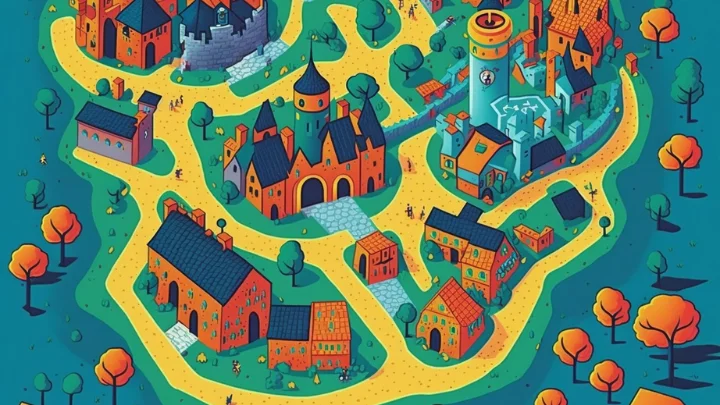
Differentiating Cities: Size, Governance, and Function
Cities, despite sharing some universal traits, can vary tremendously when scrutinized under the lens of size, governance, and function. From vast urban areas that seem to stretch infinitely to the more compact city centers, the diversity is striking. But what factors bring about these differences, and how do they shape the urban landscape?
Size: The size of a city is usually measured by its population and its physical expanse. Major cities, or metropolises, typically house millions of people and spread over vast territories. These large cities often overshadow their smaller counterparts in sheer scale and influence. However, population density can vary significantly, with some cities crammed into tight spaces and others sprawling over wide areas. Sometimes, the difference between a large town and a smaller city may simply be the classification by respective governing bodies, though the World Bank and other organizations may have more standardized criteria.
Governance: Governance structures give cities their administrative framework. Capital cities, for instance, house the primary administrative buildings of a country, such as city halls or parliament buildings. The governance model of capital cities often differs from that of other cities, given their heightened significance on a national scale. Additionally, the importance of governance can’t be overlooked when discussing city limits, as these demarcate the administrative boundaries and the extent of the city’s jurisdiction.
Function: Every city has its distinct role, making it an integral part of the urban landscape. While some cities are renowned for their economic prowess, acting as hubs for trade, commerce, and non-agricultural activities, others are more renowned for their cultural or historical significance. The central business district in many cities is dedicated to economic functions, whereas other parts might be devoted to education, entertainment, or other facilities. Moreover, cities’ functions can evolve over time. A city initially thriving due to its rich natural resources might transform into a hub for tourism or education.
Sustainability: A modern lens through which cities are increasingly being viewed is their approach to sustainability. Urban areas that emphasize sustainable practices, with green spaces, efficient transportation, and eco-friendly initiatives, stand out in the global arena. The role of urban planners in these cities is paramount, ensuring a balance between development and ecological balance.
While cities worldwide share common threads of being centers for human habitation and activity, the differences in their size, governance, and function paint diverse urban experiences.

City Life vs. Rural Life
City life and rural life represent two ends of the spectrum in terms of human habitation and lifestyle. Each offers a unique set of experiences, challenges, and benefits, shaped largely by population density, infrastructure, and the prevailing economic activity.
Pace and Density: The most immediate difference one notices between the two is the pace of life. City life, especially in large cities and major urban areas, is often fast-paced and bustling. With high population density, there’s a constant hum of activity, whether it’s the central business district’s rush or the myriad events in city centers. Conversely, rural areas are marked by a slower, more tranquil pace, where vast landscapes replace crowded streets, and the population is sparse.
Economic Activity: Cities are hubs for non-agricultural activities. Be it the towering skyscrapers of the central business district or the thriving markets in the city center, urban areas are driven by commerce, technology, and services. Rural communities, on the other hand, are often centered around agriculture and other primary activities, closely tied to the land and nature.
Infrastructure and Facilities: City life offers a plethora of amenities, from state-of-the-art sports facilities to advanced healthcare centers. Entertainment, shopping, and dining options are vast and varied. Urban planning plays a pivotal role in ensuring the infrastructure meets the city’s demands. Rural life, while it may lack some of these amenities, offers its own unique attractions — open spaces, close-knit communities, and a more intimate connection with nature.
Social Dynamics: Many cities, especially the largest cities, are melting pots of cultures, offering diverse social experiences. The vast urban landscape is filled with people from different backgrounds, leading to a rich tapestry of cultural experiences. Rural areas, with their smaller populations, often have more homogeneous communities, fostering close ties among residents.
Environment and Sustainability: While sustainable cities are becoming more prevalent, focusing on green spaces and sustainable practices, the urban landscape is often dominated by concrete structures and vehicles’ hustle and bustle. Rural areas offer a closer connection to nature, with fresher air, open fields, and a more immediate interaction with the land.
Migration Patterns: The allure of city life, with its promise of better opportunities and higher standards of living, often leads to migration from rural areas to urban centers. The push and pull factors influencing this migration are varied, from seeking employment in the city’s central business district to accessing better educational facilities.
Challenges: Both city life and rural life come with their sets of challenges. Cities grapple with issues like pollution, overpopulation, and housing shortages. In contrast, rural communities might face challenges related to access to modern healthcare, education, or economic opportunities.
While city life and rural life present contrasting experiences, both are essential to understanding human society’s broader fabric. The dynamic interplay between the two, from migration patterns to economic dependencies, shapes the world we live in today.
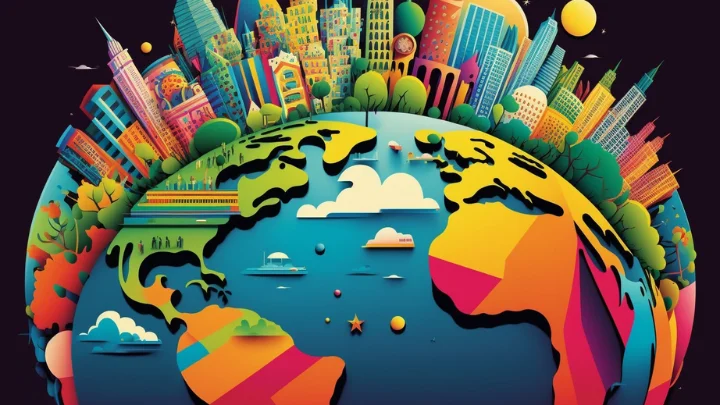
The Global Perspective
In our increasingly interconnected world, understanding the city requires us to adopt a global lens. From bustling urban areas in one continent to quiet city centers in another, the concept of the “city” varies, yet there are underlying similarities that transcend borders.
Cities Around the World: Economic activity, urban planning, and even the role of the central business district might differ based on historical, cultural, and socio-economic factors. While many cities have been urban centers for centuries, others have rapidly urbanized only in recent decades.
Migration Patterns: The vast majority of global migration is intranational, i.e., within countries. People move from rural areas to urban centers in search of better prospects. However, international migration, especially to major cities, is also significant. This flow of people shapes city life, bringing diverse cultures into the urban landscape of many cities, especially the world’s largest cities.
Economic Dependencies: In the globalized world, no city is an island. Urban areas depend on both rural communities for resources and other cities for trade and commerce. Economic activity in one city can have ripple effects across the world. The interconnectedness of cities and their reliance on other areas for goods, services, and human capital underscores the importance of sustainable practices.
Comparing City Life: Life in a bustling metropolis in Asia might seem worlds apart from a quiet city in Europe, but there are more similarities than meet the eye. From the challenges of managing large populations to the joys and conveniences of modern amenities, city life, in its essence, has shared themes across the globe.
From the city limits of a remote town to the bustling heart of a sprawling metropolis, understanding cities requires a perspective that is both global and nuanced, recognizing the shared challenges and unique characteristics of each urban center.
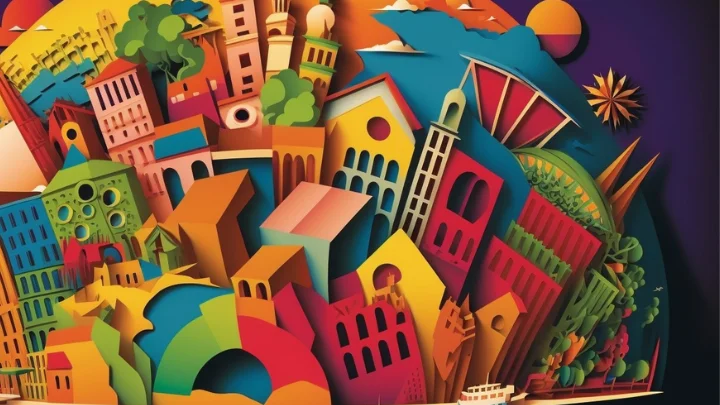
The Future of Cities
As we gaze into the horizon, the future of cities is an interplay of challenges and innovations, shaped by both local intricacies and global trends. From cities adapting to environmental changes to urban areas expanding their technological horizons, the urban landscape’s evolution promises a dynamic interplay of tradition and modernity.
Technological Innovations: Urban areas, especially major cities, are at the forefront of technological adoption. As urban planners integrate smart technologies, city life will be deeply intertwined with digital interfaces. We can expect innovations ranging from smart traffic systems in the city center to advanced waste management mechanisms that promote sustainability. Many cities will evolve, leveraging technology to streamline services and improve residents’ quality of life.
Sustainable Development: The future hinges on sustainability. As urban areas grow, so will their footprint. Urban planners, therefore, are emphasizing sustainable cities, ensuring that city centers, despite their dense population, have green spaces, renewable energy sources, and efficient transportation systems. The focus will be on striking a balance between urban development and ecological preservation.
Diverse Urban Landscape: As migration patterns intensify, especially towards the largest cities, the urban landscape will become even more diverse. Many cities will be cultural melting pots, celebrating diversity and promoting inclusivity. This social dynamism will redefine cultural expressions, economic activity, and even governance structures in the urban center.
Reimagining Boundaries: As cities expand and the population in urban areas increases, the conventional definitions of city limits might be revisited. There will be a blur between where one city ends and another begins, especially in regions with contiguous grid cells of urban development. This could challenge traditional governance models and necessitate innovative administrative structures.
Rural-Urban Synergy: The future isn’t just about cities in isolation. The relationship between rural areas and urban centers will be pivotal. Whether it’s sourcing resources, ensuring food security, or managing migrations, understanding and optimizing the rural-urban synergy will be crucial. This relationship will go beyond mere economic dependencies to encompass cultural exchanges, shared infrastructural projects, and more.
The future of cities, in its promise and its challenges, will be a testament to human ingenuity, adaptability, and the perennial quest for better living spaces. The city, in its evolving form, will continue to be a mirror to our aspirations, dreams, and the realities of our times.
Wrap Up...
From the pulsing heart of urban centers to the tranquil outskirts of town boundaries, the journey through the intricacies of city life is as vast as it is profound. These aren’t just clusters of buildings or populations, but intricate tapestries of human experience, ambition, and innovation.
Cities, irrespective of their sizes, be it large cities, major cities, or even towns, stand as testaments to our collective endeavors. While each urban area might have its distinct character, there are common threads that bind them. Be it the bustling activity of a central business district or the urban planning nuances that dictate the ebb and flow of daily life, these places are where a significant majority of the world’s population call home.
Yet, the definition of a city remains as varied as the landscapes they occupy. What might be categorized as a city in one part of the world could be seen as a mere town in another, highlighting the importance of understanding local contexts while also acknowledging global definitions and standards set by bodies like the World Bank.
It’s also essential to recognize the interdependence between urban and rural areas. They aren’t siloed entities but deeply intertwined, their futures collectively shaping the trajectory of nations. Urban areas, with their high population density, depend heavily on rural communities for resources, just as rural regions lean on cities for economic activity and opportunities.
Looking forward, the challenges that cities face are monumental, but so are the opportunities. With the right blend of technology, governance, and community engagement, our urban areas can grow into sustainable cities, setting standards for the world and improving the quality of life for their inhabitants.
To learn more about geography, you might also want to read this article –> Exploring Geography: Definitions to Examples

